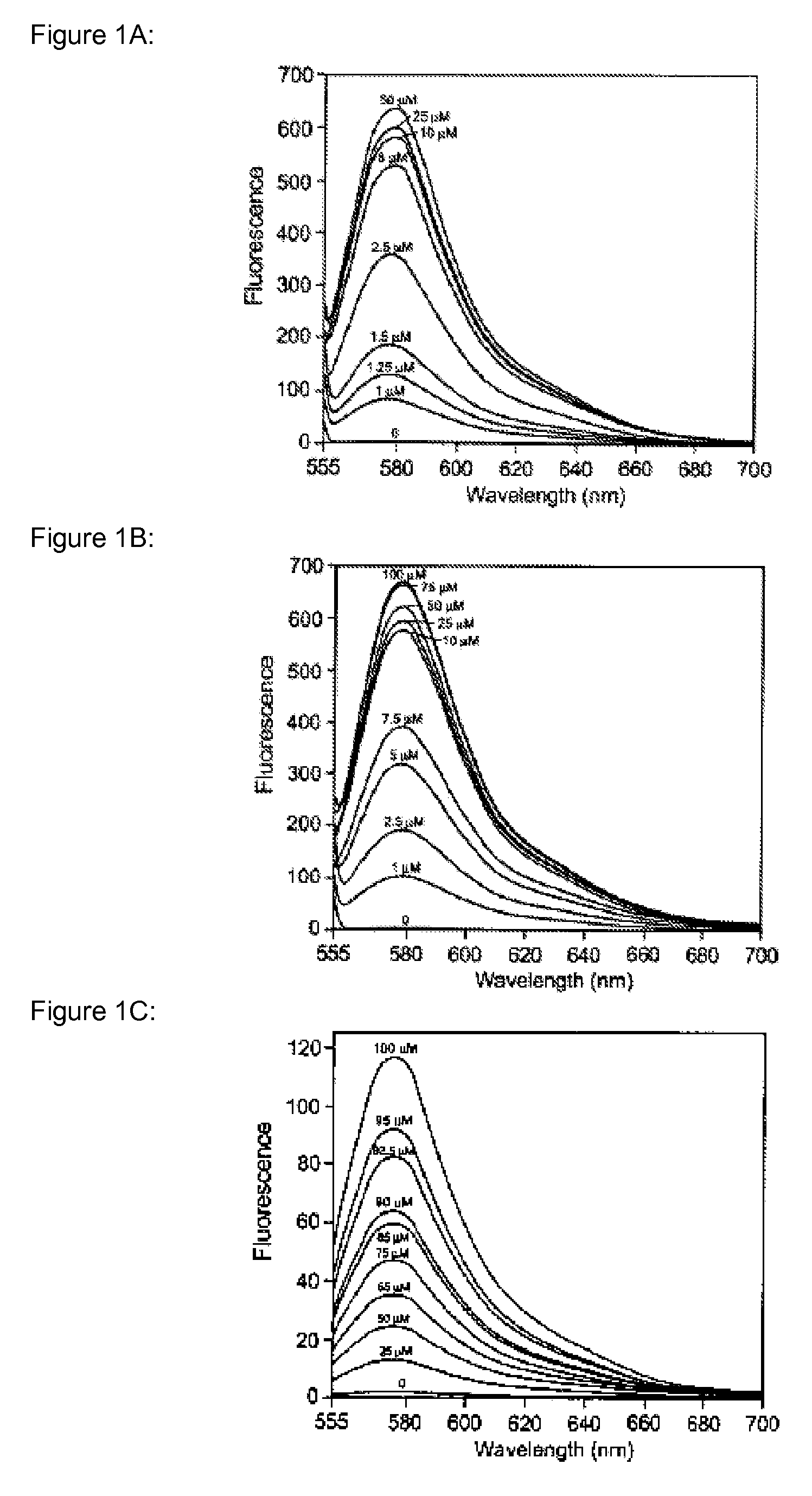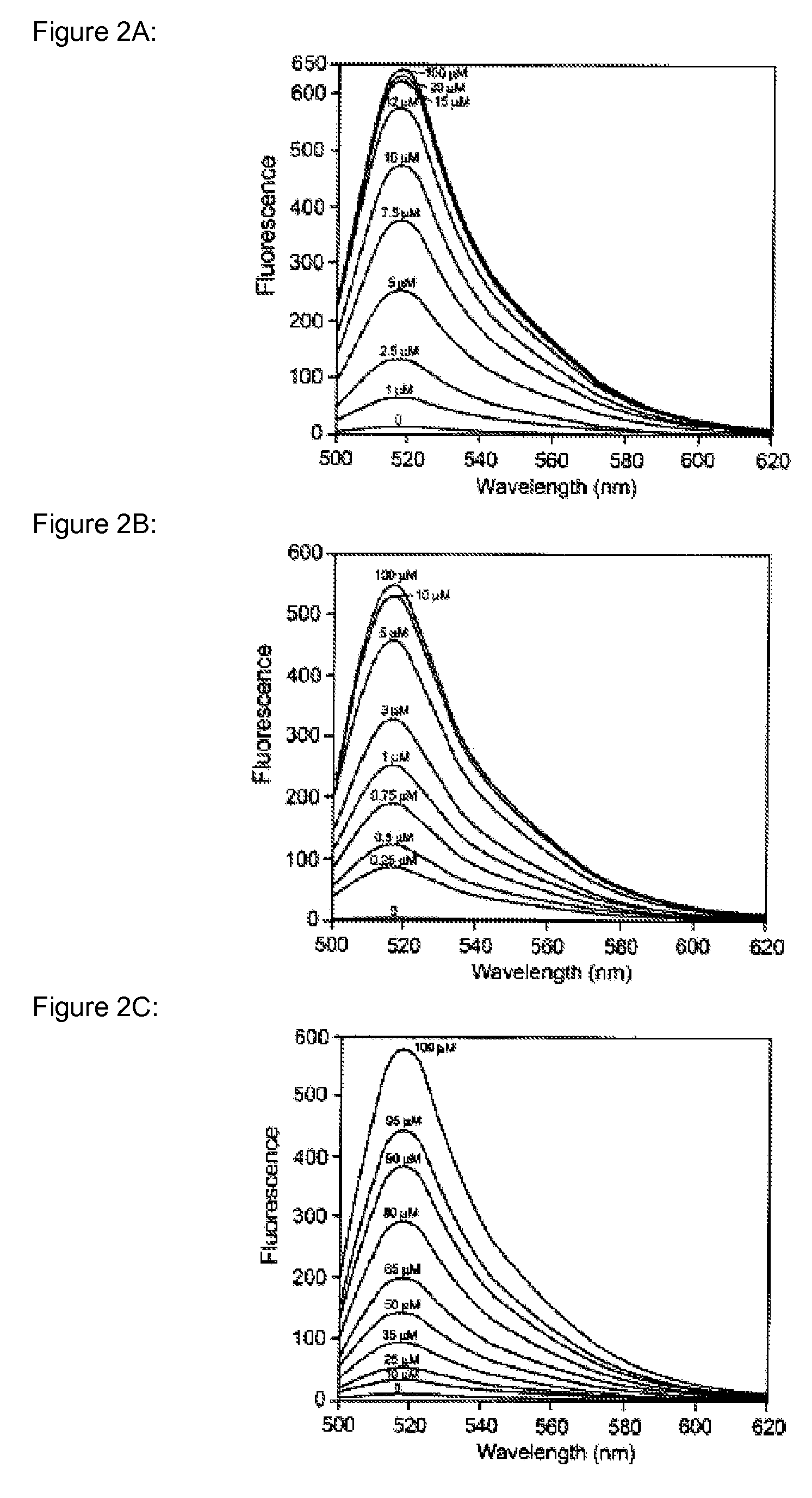Heavy metal binding compounds and their method of use
a heavy metal and compound technology, applied in the field of heavy metal binding compounds and their methods of use, can solve the problems of increasing environmental and health risks of heavy metal ions, mercury ions are persistent and prevalent health risks, and the prevalence of nickel and cadmium ions in manufacturing
- Summary
- Abstract
- Description
- Claims
- Application Information
AI Technical Summary
Benefits of technology
Problems solved by technology
Method used
Image
Examples
example 1
Preparation of Compound 12
[0228]Compounds 1 (11.3 g, 36.8 mmol) and 2 (5.35 g, 38.5 mmol) were dissolved in DMF (˜200 mL), then potassium carbonate (13.8 g, 100 mmol) was added. The reaction mixture was heated at 110-130° C. with stirring for 12-18 hours, until TLC (Rf=0.6, EtOAc / hexanes (30:70)) of a water-EtOAc aliquot shows that the starting material had been consumed. The reaction mixture was cooled to ambient temperature, then poured into ice water (˜1.2 L) and stirred at ambient temperature. After stirring for ˜15 minutes the oil coagulated into a crystalline solid. Stirring was continued until a filterable solid was obtained. The solids were collected on a glass frit funnel by suction-filtration, rinsed with water, and dried to yield 12.7 g of 3 as pale yellow crystalline solid.
[0229]
[0230]A solution of 3 (12.7 g, 34.76 mmol) in 1:1 chloroform / acetic acid (˜100 mL) was treated with 10% palladium on carbon (1.0 g) and shaken with a Parr shaker under hydrogen at ˜40 psi for 12-...
example 2
Preparation of Compound 15
[0245]A pale brown mixture of compound 6 (0.20 g, 0.41 mmol) and crystallized 3-dimethylaminophenol (0.11 g, 0.82 mmol) in 6 mL propionic acid was heated overnight at 60° C. under argon. TLC (EtOAc / hexanes 3:2) of a water / EtOAc aliqhot showed consumption of 6 (Rf 0.55) and formation of compound 13 (Rf 0.20). After cooling, the reaction solution was added slowly to 50 mL 3M aqueous sodium acetate with stirring. The resulting precipitate was collected on a Buchner funnel, rinsed with water (3×10 mL), and dried in vacuo to give 13 as 0.26 g of a lavender powder.
[0246]
[0247]To a solution of compound 13 (0.26 g, 0.36 mmol) in 1:1 methanol / chloroform (15 mL) was added p-chloranil (0.13 g, 0.54 mmol) at rt. The resulting mixture was stirred for 4 h, whereupon TLC (chloroform / methanol / acetic acid, 50:5:1) showed consumption of 13 (Rf 0.25), and formation of compound 14 (Rf 0.05, red fluorescent spot). The volatiles were removed in vacuo, and the residue purified by...
example 3
Preparation of Compound 18
[0251]To a light yellow solution of compound 6 (0.18 g, 0.37 mmol) and phosphonium salt 7 (0.20 g, 0.37 mmol) in dry DMF (8 mL) under argon was added potassium carbonate (72 mg, 0.52 mmol). The resulting mixture was heated at 90° C. for 48 h, whereupon TLC (EtOAc / hexanes 3:2) showed consumption of 6 (Rf 0.50) and formation of stilbene 16 (Rf 0.60). After cooling, the reaction mixture was poured into 80 mL 10% citric acid, then extracted with 4:1 EtOAc / toluene (4×25 mL). The extract was washed with water (1×) and brine (1×), dried over sodium sulfate, and concentrated in vacuo to give crude compound 16 as 0.48 g of a red-yellow oil. Further purification was effected by flash chromatography on silica gel using 1:1 EtOAc / hexanes. Pure product fractions were combined and evaporated to give 16 as 0.19 g of a red-yellow oil.
[0252]
[0253]A solution of compound 16 (0.19 g, 0.29 mmol) in triethylphosphite (3 mL) was heated to 120° C. under argon for 16 h, whereupon T...
PUM
| Property | Measurement | Unit |
|---|---|---|
| emission wavelength | aaaaa | aaaaa |
| emission wavelength | aaaaa | aaaaa |
| wavelength | aaaaa | aaaaa |
Abstract
Description
Claims
Application Information
 Login to View More
Login to View More - R&D
- Intellectual Property
- Life Sciences
- Materials
- Tech Scout
- Unparalleled Data Quality
- Higher Quality Content
- 60% Fewer Hallucinations
Browse by: Latest US Patents, China's latest patents, Technical Efficacy Thesaurus, Application Domain, Technology Topic, Popular Technical Reports.
© 2025 PatSnap. All rights reserved.Legal|Privacy policy|Modern Slavery Act Transparency Statement|Sitemap|About US| Contact US: help@patsnap.com



